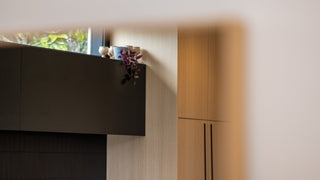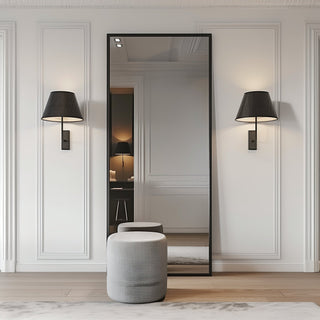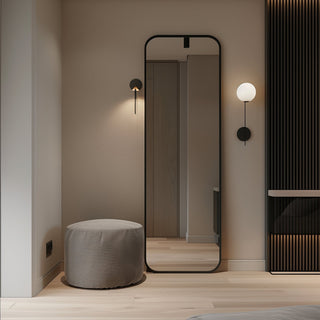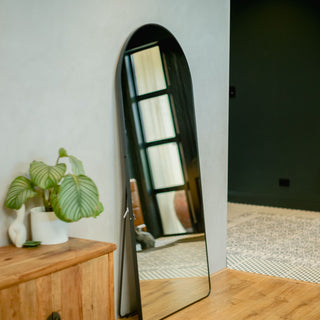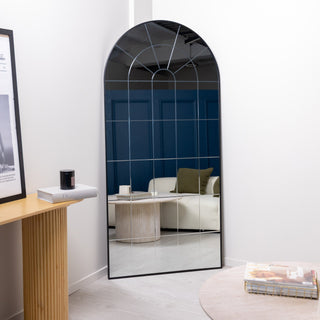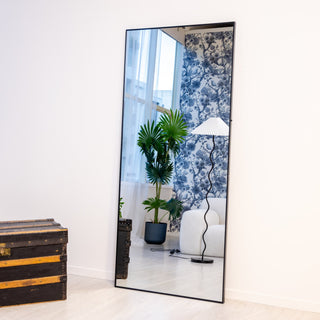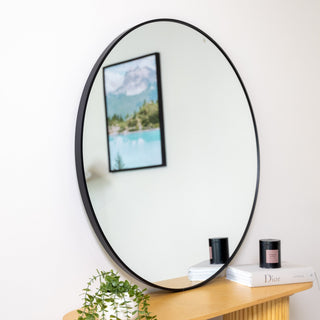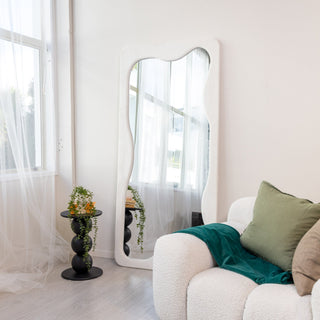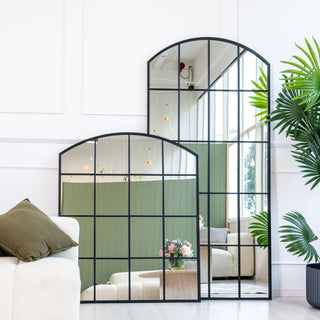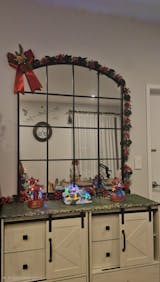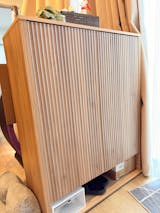So, you're looking for a new full length mirror. You’re probably thinking about the frame, the size, how it will look in your space. The exciting bits. But there’s a technical detail hiding behind the glass that can make a world of difference to how you see yourself, and how long your mirror lasts. That detail is the type of silvering used.
You might have seen terms like ‘single silver’ or ‘double silver glass’ floating around, especially with the more premium options. It sounds technical, maybe a bit like marketing fluff. Does it really matter?
Well, it can. The choice between them is one of those subtle things that can impact a mirror's clarity, its lifespan and even its environmental footprint. Lets break down what these terms actually mean and figure out which one might be right for your home.
What Makes a Mirror a Mirror Anyway?
Before we dive into the deep end, let's get the basics sorted. A mirror isn't just a piece of glass. At its core, a modern mirror is made by bonding a super thin layer of reflective metal to the back of a pane of high quality glass, its usually silver. Behind this silver layer, there’s protective coats of paint and sealant to guard the delicate metal from scratches and the elements.
And it's this silver layer that does all the hard work of bouncing light back to create your reflection. The quality and application of that silver is where the whole story of single versus double silver begins.
The Classic Choice: Understanding Single Silver Glass
Single silver is, for the most part, the industry standard. It’s what you will find in a huge range of mirrors across New Zealand, from simple bathroom cabinets to decorative pieces. The process involves applying one layer of silver onto the glass, which is then sealed with a layer of copper and a few layers of protective paint.
For many situations, a well made single silver mirror does a perfectly good job. It provides a clear reflection and, if it's manufactured to a high standard, can last for a good number of years. It’s generally the more cost effective option, making it accessible for almost any budget.
There can be a downside though. The copper layer, while protective, is susceptible to oxidation over time. Have you ever seen an old mirror with dark spots creeping around the edges, that’s often called ‘black edge’. It’s a sign that moisture or chemicals have gotten through the paint and started to corrode the metallic layers. A process that can be accelerated in damp environments, which is something to think about in many Kiwi homes.
The Premium Player: What Is Double Silver Glass?
As the name suggests, the process for double silver glass involves applying two layers of silver instead of one. This isn't just about doubling up for the sake of it, each layer may serve a slightly different purpose. The first layer provides that primary brilliant reflection, while the second can act as a additional protective agent for the first.
But what's really interesting is that most high quality double silver mirrors are also ‘copper free’. Instead of using that traditional copper film, manufacturers may use other specialised chemical activators and a double layer of lead free paint. This modern approach seems to be where the real benefits lie.
By removing the copper, the mirror becomes significantly more resistant to oxidation. The chance of that dreaded black edge appearing is greatly reduced, which can give the mirror a much longer potential lifespan. Proponents believe this method also results in a clearer, more faithful reflection. The image you see can appear brighter and with less distortion. A truer representation of colour and light.
Putting Them Head to Head
So, when your mirror is hanging on the wall, what differences might you actually notice? Let's put them side by side.
Clarity and Reflection Quality
A good quality single silver mirror will give you a fine reflection, you probably wouldn't look at one and think anything is wrong. However, when you place it next to a double silver mirror, you may notice a subtle difference. The reflection in the double silver mirror often looks a touch brighter. The colours can seem more vivid. Think of it like the difference between a standard television and a high definition one, both show you the picture, but one just feels sharper and more true to life.
Durability and Lifespan
This is likely the biggest and most practical difference. Because double silver copper free mirrors lack that easily corroded copper layer, they stand up to humidity and time much better. For a mirror destined for a bathroom or any room that might get a bit steamy, a double silver mirror is almost certainly the more reliable long term choice. There are less reasons for it to fail. It’s an investment against the slow creep of moisture damage.
Environmental Considerations
This is a point that is becoming more important for many of us. The traditional mirror making process can involve both copper and lead. Modern double silvering processes that are copper free and use lead free paints are a step toward more eco friendly manufacturing. It reduces the use of heavy metals, which is better for the environment.
The Price Tag
There’s no getting around it, double silver glass is a more complex product and its price usually reflects that. A single silver mirror will almost always be the more budget friendly option upfront.
So, Which One Should You Choose?
Deciding between the two really comes down to your priorities and where the mirror is going to end up.
A single silver mirror might be for you if:
- You're on a bit of a budget.
- Or the mirror is for a dry area, like a bedroom or hallway with good ventilation.
- You're decorating a rental property where a very long lifespan isn't what you're looking for.
On the other hand, investing in a double silver mirror could be the better call if:
- You value the best possible clarity and a true colour reflection.
- The mirror is going in a bathroom, laundry, or another high humidity area.
- You are buying for your long term home and see the mirror as a lasting fixture.
- Environmental impact is a factor you care about.
It’s a bit of a trade off, really. The immediate savings of a single silver mirror might be appealing, but the potential for greater durability and a superior reflection could make a double silver mirror the more valuable choice in the long run.
Ultimately, the glass is just one part of the whole package. But now you know what's going on behind the scenes. You’re equipped to look beyond just the frame and make a choice that ensures the reflection you see for years to come is as clear as the day you brought it home.

